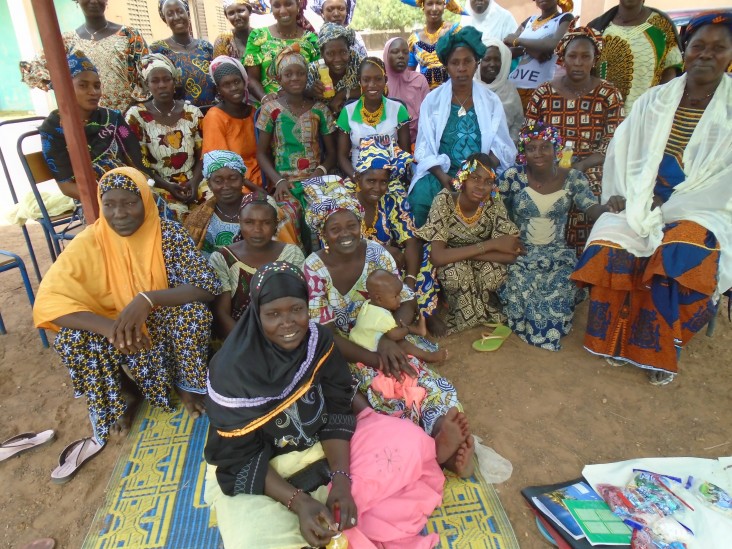Speeches Shim

September 2018 — Maïmouna Diakité, 31, is a mother of six children and a member of the Sigui Diya (“Respect Each Other” in the Bambara language) producer cooperative in Mali. Before January 2015, she was trying to provide for her family through small–scale gardening activities during the off-season, working hard, but making very little money in return.
Since 2015, USAID’s Mali Cereal Value Chain project has been training Diakité and other small producers in the village of Diambala — located 45 kilometers from Bougouni, in the Sikasso region — in good agricultural practices, soil preparation techniques, and trade.
Agriculture, livestock production, and small-scale trade are the major activities in Diambala like in almost all the villages in this region. The main crops cultivated include millet, rice, sorghum, cowpea and groundnut. There are two cereal producer cooperatives working together in the village: a male-member cooperative, Nyeta (Advance Together), and Sigui Diya, which is composed of women.
During the rainy season, Diakité grows rice. Like most members of Sigui Diya, she followed the USAID training, specifically, intensive rice production practices and how to access credit. As an early adopter of the intensive rice production system, she prepared a half-hectare field of rice, which she maintained according to project guidelines.
She then discussed her credit needs with a project-sponsored financial intermediary who helped her develop and submit a loan application for $1,400 to a microfinance institution. The loan was approved and she used the money to buy rice from members of both the Sigui Diya and Nyeta cooperatives for future sale.
More than 5,000 women and 10,000 men from producer cooperatives across the entire community of 17 villages received loans thanks to a financial intermediary. Moreover, 47,000 producers and 10,000 people in other agricultural-related business areas have adopted technologies and management practices promoted by the project to grow their businesses.
Diakité stored the rice and waited for the market price to rise before selling. In her own field, she achieved very high productivity, harvesting 1,500 kilograms, equivalent to 15 bags of rice, which she also sold for approximately $1,100. She then reimbursed the loan from the microfinance institution.
With the remainder of her profits from rice sales, Diakité purchased products to fill her shop — which she owned prior to the loan but could not afford to stock — and began a profitable retail business. She also continued to buy cereal products from cooperative members that she resold in the local market.
Today, Diakité is the main shopkeeper in Diambala from whom everyone buys an array of food products, including sugar, salt, coffee, oil, bread, soft drinks, and milled millet, rice and sorghum.
“Thanks to the CVC [Cereal Value Chain] project, I started breeding small ruminants this year. I help my husband to take care of our children. I now have a revolving fund of over $3,700,” said Diakité proudly. That fund has allowed her to provide credit to other producers.
In 2016-2017, almost all members of Sigui Diya established a rice field using intensive rice production practices. Many members of the two cooperatives also took loans from Diakité to buy agricultural inputs. Loans were reimbursed “in kind” with millet, rice or cowpeas. Thus, in addition to being the major shopkeeper in the village, Diakité also became a major source of short-term input credit for producers.
The five-year USAID Cereal Value Chain project is part of the U.S. Government’s global hunger and food security initiative, Feed the Future, and covers the Sikasso, Mopti and Timbuktu regions. The program, which began in 2014, has helped 57,000 producers, agro-input dealers, and equipment suppliers to apply modern technologies and management practices and has assisted 66 producer organizations to access more than $5 million in loans from commercial banks and microfinance institutions.
LINKS
Follow @USAIDMali, on Facebook

Comment
Make a general inquiry or suggest an improvement.